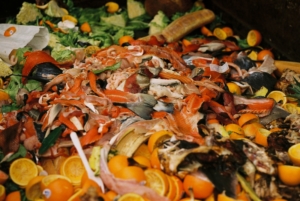USA Food Waste: 7 Surprising Facts
 What’s the number one risk to worldwide health? The answer may surprise you–it’s not AIDS or malaria, but hunger and malnutrition. One in nine people in the world do not get enough food to be healthy and lead an active life. And yet, in countries like the United States, there remains a shocking excess and waste of food products that could be used to feed millions around the globe. As people become increasingly conscious about recycling and the environment, they should also take a moment to turn their attention to how much they put on their plates. The following points are seven eye-opening facts that shed light on just how extensive the problem of American food waste is.
What’s the number one risk to worldwide health? The answer may surprise you–it’s not AIDS or malaria, but hunger and malnutrition. One in nine people in the world do not get enough food to be healthy and lead an active life. And yet, in countries like the United States, there remains a shocking excess and waste of food products that could be used to feed millions around the globe. As people become increasingly conscious about recycling and the environment, they should also take a moment to turn their attention to how much they put on their plates. The following points are seven eye-opening facts that shed light on just how extensive the problem of American food waste is.
1. Let’s Talk Calories
The volume of American annual food waste might be better understood in terms of calories. The U.S. Department of Agriculture reports that each year, a staggering 141 trillion calories are gone unconsumed. This is equivalent to around 1,300 calories per capita, per day. This is approximately the number of calories consumed by a small adult or child in a day, meaning that these wasted calories could go toward nourishing several hungry people.
2. Just How Much Food Is 141 Trillion Calories?
Not everyone likes to count calories, and even fewer know what exactly a calorie is. To put it in different terms, over a third of the entire U.S. annual food supply is wasted, a total of 133 billion pounds. That equals more than 20 pounds of food per person per month. Most everyone knows what pounds are, and that’s a lot of them.
3. Americans Waste Some Foods More Than Others
According to the USDA, the top three kinds of food thrown away in 2010 were dairy (25 billion pounds), vegetables (25 billion pounds) and grains (18.5 billion pounds). These are three of the essential food groups on the food pyramid.
4. The U.S. Navy Throws Away What It Can’t Fit In Its Boats
The government provides the brave men and women of the U.S. Navy with the food and drink necessary to make their sea excursions bearable, but sometimes it isn’t possible to get all the food that is given to them into the storage space of their vessels, which are often very small. One might suppose that when this happens the food is donated to a local homeless shelter or food bank.
Unfortunately, this is not the case. Because the U.S. government could be held liable for any sickness that might result from the consumption of a donated food product, the Navy is forced instead to throw surplus provisions away. The extra microwave pizzas and cereal pouches might not seem like much, but this wasted food could be used to feed a family in need.
5. Americans Throw Out More Food Than Pretty Much Anything Else
Food waste makes up over a fifth of American garbage, and half of the waste accumulates at landfills. America tosses more food into the trash than paper, plastic, metal or glass—with 5 million tons as the smallest discrepancy.
6. Food Waste Hurts The Environment
The aforementioned landfills are filled with decomposing organic waste that produces methane, a greenhouse gas that is 20 times more dangerous than carbon dioxide. These landfills are the largest producer of methane emissions in the United States, making up almost a quarter of the total emissions, according to the NRDC.
7. On the Bright Side…
The amount of food wasted, not only by the United States but by other nations as well, suggests that alleviating world hunger isn’t a matter of producing more food. Instead, it is a matter of better managing the food that is already produced, by preserving it and distributing it more thoroughly. There is enough food to feed all 7 billion people in the world. It just needs to get to put in mouths instead of in the trash.
– Katharine Pickle
Sources: NPR, Washington Post
Photo: Wikimedia Commons
